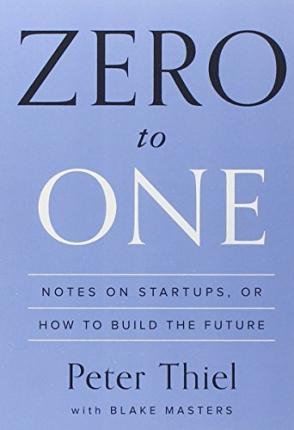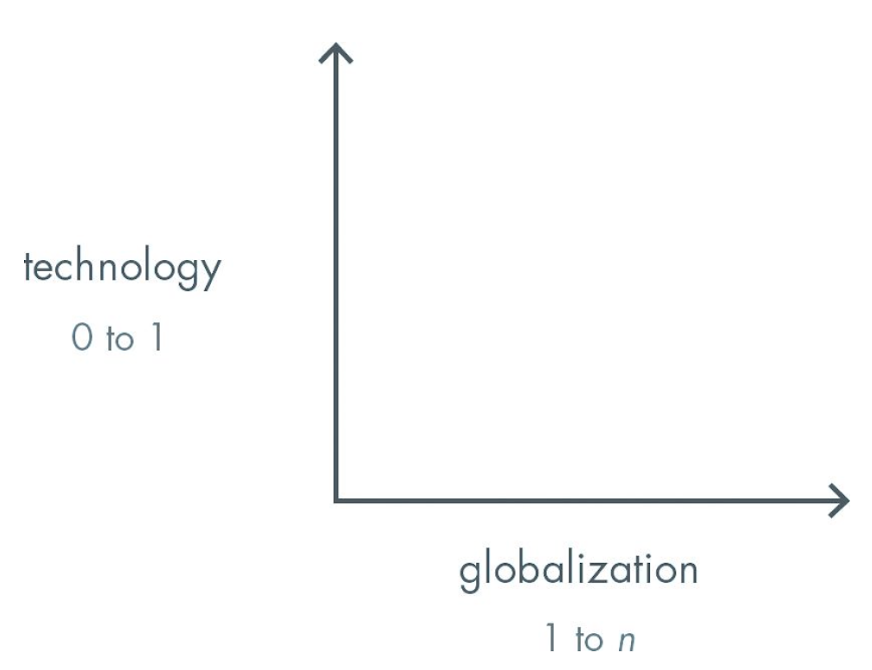Zero to One
28 Oct 2019
What important truth do very few people agree with you on?
~Peter Thiel’s contrarian question
Peter Thiel is a Silicon Valley billionaire, co-founder of multiple successful startups (including PayPal), and a venture capitalist. In those roles, Thiel asks the above contrarian question while interviewing job candidates.
The question is simple, but difficult to answer because it requires the respondent to express an unpopular opinion. As observed in the book Zero to One, courage is less common than genius.
Successful Contrarians
A good answer to the contrarian question might look like this:
Most people believe in x,
but the truth is the opposite of x.
Answer the question well, and you might launch a successful enterprise. For example:
-
1970s: Most people believed that computers were big, mysterious devices that belonged in glass data centers. Bill Gates, Steve Jobs, Paul Allen, and Steve Wozniak envisioned a computer on every desktop. Microsoft and Apple were born.
-
1990s: The major search engines were a mess of advertisements and distractions. Larry Page and Sergey Brin believed that the search page should be sparse, and ads could be displayed with search results, but only if results were delivered quickly. They launched Google.
-
Early 2010s: Major auto makers believed that electric vehicles were impractical, and if built they could only be ugly. Tesla figured out how to deliver green results in attractive, high-performance electric cars. And now they’re solving the mass production challenge.
Most people think that new ideas are crazy. Contrarians will push ahead anyway.
Zero to One: Explained
The author explains the Zero to One concept with the following chart.

Moving from Zero to One (vertical) means creating the first version of something useful while others are unable to see the vision. Moving from 1 to n (horizontal) means creating more copies of something that works.
For example, making typewriters in the year 1970 would be an example of horizontal progress because typewriters were common in that year. But creating the first word processor (Wang, IBM DisplayWriter, etc.) was a vertical move (zero to one) because word processors were unknown until then.
Taking a company from Zero to One is hard because it involves creating something that has never been seen before. At the same time, payoffs are huge.
Building Companies Using Zero to One
What work is required to take a company from Zero to One? As a first step, the author offers a company-building version of the contrarian question:
What valuable company is nobody building?
The book goes on to share seven questions that every business must answer in order to successfully navigate from Zero to One:
- Engineering: Can you create breakthrough technology instead of incremental improvements?
- Timing: Is now the right time to start your particular business?
- Monopoly: Are you starting with a big share of a small market?
- People: Do you have the right team?
- Distribution: Do you have a way to not just create but deliver your product?
- Durability: Will your market position be defensible 10 and 20 years into the future?
- Secret: Have you identified a unique opportunity that others don’t see?
In recent years, many green energy startups launched with good intentions. However, they were unable to differentiate themselves from competitors and unable to deliver real value to customers. They did not have solid answers to the above questions, and they failed. Tesla, on the other hand, entered the market with solid answers for the set of questions. Therefore, Tesla has made the jump from zero to one.
Conclusion
Leading a company from zero to one has always been tough because customers gravitate towards products they already know. Henry Ford’s customers might have asked for a faster horse. However, progress depends on the courage of leaders who are willing to embrace the unfamiliar. Choosing the unfamiliar path, wrestling with the contrarian question, and executing well… that’s how to move from Zero to One.



